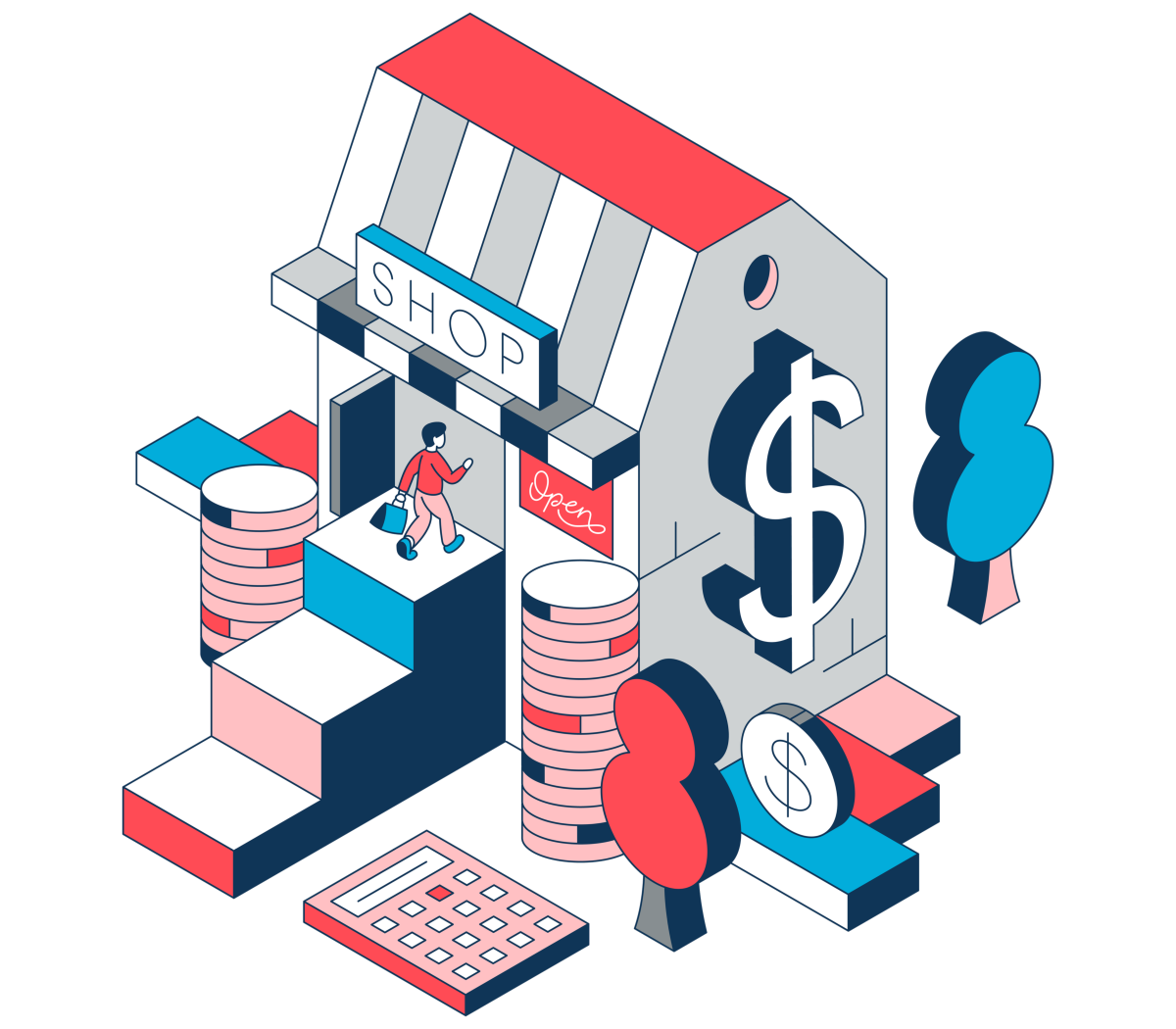We are proud to partner with Farad Ali, who also facilitates courses in our Partner to Empower Retail Workshop. He has served as an elected official in North Carolina, vice president at NMSDC, and CEO of The National Institute of Minority Economic Development. Visit www.partnertoempower.co to learn more about Brookfield Properties' Partner to Empower program.

Grow your brand with a business model
Better understand your business with this powerful tool
So, you’ve started your very own business. Congrats! But now you’re struggling to wrap your head around all the different aspects of it. From advertising to finances, production to partners, and everything in between, it can be overwhelming how much there is to juggle. That’s where a business model comes in handy. With help from Farad Ali, who is a proven national business and community leader with 30+ years of experience dedicated to economic development and the president & CEO of Asociar LLC, we’ll walk through the basics of business models and how they are the key to managing your brand.
Get to know your model
Your business is a system of roles and capabilities designed to develop, sell, deliver, and support products or services. A business model helps you sort through these various roles and capabilities, allowing you to identify leadership development opportunities, identify business gaps, and develop an overview of the business.
 According to Ali, “When we’re developing businesses, we’re really building our reputation. We’re building our ability to make sure people understand that when we say what we’re going to do, we’re going to end up doing it.”
According to Ali, “When we’re developing businesses, we’re really building our reputation. We’re building our ability to make sure people understand that when we say what we’re going to do, we’re going to end up doing it.”
This is why business models are necessary for building a brand. They help you understand your business from the inside out — its purpose, its objective, and how it fits into the market. Once you fully understand your business, it is that much easier to share your brand with consumers and get them on your side.
Breaking down the business
A typical business model has nine building blocks:
- Market & customer segments: Who are your current customers, and who still needs your business’ product or service?
- Value proposition: What problem does your business solve, and how do you solve it?
- Channels: How do customers find your business, and how do you deliver your value proposition to them? To learn more about channels, check out our article on building a marketing plan.
- Customer relationships: How do you talk to your customers about your business?
- Revenue streams & pricing model: How will you get paid for the solution you provide?
- Key resources: What do you need to have to deliver your business’ product or service?
- Key activities: What do you need to do to deliver your business’ product or service?
- Partners: Who do you need to work with to deliver your business’ product or service?
- Cost structure: How much will your partners, activities, and resources cost you?

Understanding your value propositions, customer relationships, and customer segments helps you decipher the desirability of your business. Do people really want or need it? Figuring out your key partners, key activities, and key resources helps you determine the feasibility of your business. Can you actually build it? Cost structure and revenue stream provide a sort of sanity check. Ali explains this check as: “Can you gain more revenue than it costs to make sure that you’re able to build your product?”
This is quite a lot of information to consider so let’s focus on the three most important segments.
Props to the value proposition
To help figure out your value proposition Ali asks, “What gives you a differential value proposition? Is it because you’ve had experience? Is it that you’re new? Is it that you perform customization? Do you have a personal brand that makes it work? Is your pricing high or low?” Let’s take a closer look at each of these elements:
- Newness: Does your business provide a new solution or create an entirely new industry?
- Performance: Does your business improve upon or outperform existing products or services?
- Customization: Is your product or service tailored to the specific needs of your target audience?
- Brand: Does your brand have a strong story? Does your brand signify status?
- Price: Does your business offer value compared to competitors? Or, inversely, if you’re a luxury brand, does your pricing express that?
If you own a handbag company, you need to find what sets you apart from other brands. Is it cutting-edge design? Is the price affordable? Do your bags provide a function that’s never been seen before? Is your design aesthetic unique enough that it stands out from the crowd and can signify status?
Customer segments
Now that you have your brand’s mission, it’s time to focus on the heart of any business — your customers. According to Ali, customer segments are the different groups of people or organizations your business aims to reach and serve. This includes users who might not generate revenues, but are necessary for the business model to work. There are a few different types of customer segments you can tap into:

- Mass market: This segment sells to everyone.
- Niche market: This describes selling to a hyper-focused group.
- Segmented market: Selling a few different products or solutions to various groups of people.
- Diversified market: Offering skills or products that complement your existing services.
- Multisided platform: This is when you connect with two or more distinct groups of customers by offering efficiency. Ali gives the example of a barber who accepts walk-ins, takes reservations, and makes house calls.
Cost structure
Lastly, let’s look at a very crucial aspect of your business model — cost structure. Yep, all the money stuff! Your cost structure describes all costs incurred to operate your business model. This includes everything from electricity bills to employee wages, production costs, marketing cost, etc. Once you understand your cost structure, you can divide your total cost by your product to determine your break-even point.
Ali notes the importance of cost structure, stating, “It really helps you to understand how your business should work. If your costs are too high, I promise you will be out of business because whatever revenue you’re making will spin out. And whatever capital you have will spin out and you’ll lose. So being mindful early on of your cost structure and where you are is going to be really critical to how you build out.”
Now that we’ve examined some of the most important parts of a business model, it’s time to apply these to your brand. Consider some of the questions we touched on. Reflect on your main goals, who your main target is, and crunch some numbers to determine the feasibility of your business model. And remember, value proposition, customer segments, and cost structure are just the tip of the iceberg. There’s six more parts of the business model for you to build out from there, and the more you understand how your brand fits into this model, the more you will set yourself up for success.
Want more retail tips delivered straight to your inbox?
Sign up for the Retailvisory newsletter here.
